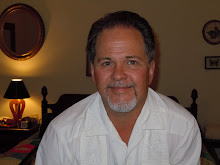Reggae swings backwards. It is some of the hippest music there is. It is soul music, and you have to experience it as a cultural event related to social injustice.
Afro-Cuban quintessentially is ensemble music. Each musician must know their individual part and must play it authoritatively but independently from the other players in the band. These musicians rely upon one another for rhythmic support, and it rotates democratically through the band. It often uses a clave, a fancy term for a rhythmic pattern of 2/3 or 3/2 found in a bar of 4/4 music. Saxophones usually play the “riff,” a repeated melodic fragment, and the brass punctuate. Harmonically Afro-Cuban may use the augmented fifth of a chord provoking a primitive feeling. In mambo gutteral grunts and shouts can be heard from the percussionists and even dancers. Afro-Cuban is mostly dance music.
In medieval music mensuration of perfect tempus and major prolation has a symbolic association with the Holy Trinity.
Hexachordal Combinatoriality in the 12 tone method of music composition combines halves of two different tone rows.
The Ripieno group in a Concerto Grosso is the larger group of players usually with not as much talent. The concertante group is the smaller group of more skilled players. This group serves as the solo “instrument” in a concerto for an ensemble. The J.S. Bach Brandenburg Concerto’s might be the most well known of the genre.
Arch form is ABA.
Stophic form consists of repeated stanzas.
The Super Locrian or Locrian Sharp two is a mode of the Lydian Chromatic Concept, a scholarly treatise by George Russell, used to define a scale choice for improvisation over a half-diminished chord.
Metric Modulation is a method of changing meter in music that makes use of polyrhythm. It superimposes a different but multiple time signature over the original and begins to use it for its main metric subdivision.
skip to main |
skip to sidebar

I invite all observant, inquisitive, positive people to post their views about the current state of affairs in the United States of America. This is a positive blog meant to enlighten the state of affairs in modern day America.
Blog Archive
- November (7)
- October (9)
- September (12)
- August (3)
- July (5)
- June (6)
- May (2)
- April (3)
- March (5)
- February (4)
- January (1)
- November (1)
- October (4)
- September (2)
- August (4)
- July (7)
- June (6)
- May (7)
- April (9)
- March (3)
- February (14)
- January (15)
- December (10)
- November (13)
- October (8)
- September (12)
- August (11)
- July (17)
- June (5)
- May (10)
- April (12)
- March (9)
- February (11)
- January (7)
- December (4)
- November (4)
- October (3)
- September (8)
- August (3)
- July (2)
- June (5)
- May (4)
- April (6)
- March (13)
- February (7)
- January (10)
- December (9)
- November (12)
- October (5)
- September (3)
- August (11)
- July (16)
- June (14)
- May (17)
- April (6)
- March (6)
- February (4)
- January (18)
- December (7)
- November (7)
- October (12)
- September (9)
- August (11)
- July (14)
- June (6)
- May (5)
- April (5)
- March (7)
- February (4)
- December (2)
- November (3)
- October (2)
- September (9)
- August (3)
- July (2)
- June (5)
- May (1)
- April (6)
- March (5)
- February (9)
- January (6)
- December (10)
- November (1)
- September (4)
- August (2)
- July (2)
- June (1)
- May (6)
- April (2)
- March (5)
- February (7)
- January (6)
- December (5)
- November (1)
- October (9)
- September (14)
- August (15)
- July (12)
- June (3)
- May (5)
- April (4)
- March (1)
- February (3)
- January (9)
- December (8)
- November (4)
- October (3)
- August (2)
- July (2)
- May (2)
- April (6)
- March (19)
- February (7)
- January (7)
- December (7)
- November (8)
- October (4)
- September (7)
- August (8)
- July (12)
- June (15)
- May (12)
- April (11)
- March (3)
- February (5)
- January (10)
- December (4)
- November (8)
- October (10)
- September (13)
- August (14)
- July (2)
- May (1)
- April (1)
- March (1)
- January (5)
- October (1)
- August (1)
- July (1)
- June (1)
- May (5)
- April (2)
- March (3)
- February (1)
- April (1)
- February (1)
- January (1)
- December (1)
- November (5)
- May (1)
- April (5)
- March (8)
- February (3)
- January (1)
- October (4)
- September (6)
- April (4)
- March (1)
- November (1)
- August (5)
- February (2)
- January (37)
- December (31)
- November (24)
- October (16)
- June (8)
- May (31)
- April (16)
- September (56)
- August (54)
- July (9)
- June (27)
- May (20)
- March (11)
- February (5)
- October (4)
- September (6)
- August (21)
- July (1)
- June (30)
- May (16)
- August (11)
- July (5)
Music Links
About Me

- Par3pio
- Dogtown, Ohio, United States
- Musician, Composer, Academician, Skateboarder, Writer, Poet